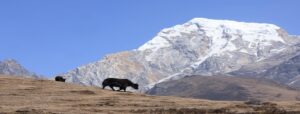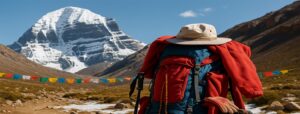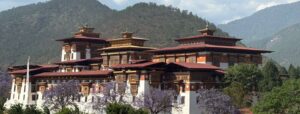Upper Mustang Trek in March – Welcome to the world of Upper Mustang Trek, where adventure awaits you at every turn. The trek to Upper Mustang in March is not just a journey; it’s an experience of a lifetime that will leave you spellbound. From the snow-capped peaks to the ancient monasteries, every moment of the trek is thrilling and exciting. So, buckle up, and let’s dive into the world of Upper Mustang Trek!
The journey begins with a flight to Jomsom, a small town nestled in the Kali Gandaki Valley. The flight itself is an adventure, with panoramic views of the Himalayas that will leave you awestruck. Once you arrive in Jomsom, the real adventure begins. You’ll traverse through the barren hills and dry desert-like terrain, with the Kali Gandaki River on one side and towering mountain peaks on the other.
Kathmandu to Upper Mustang
If you’re planning to embark on an adventure to Upper Mustang, one of the most important aspects to consider is how to get there. Kathmandu, the capital city of Nepal, is the starting point for most trekkers. Here are some options for getting to Upper Mustang from Kathmandu:
Fly to Jomsom:
If you’re planning a trip to Jomsom from Kathmandu, you will most likely need to take a connecting flight, as Jomsom is only accessible by air or by trekking for several days. The flight from Kathmandu to Jomsom is an incredibly scenic one, as it takes you through the Himalayan mountain range.
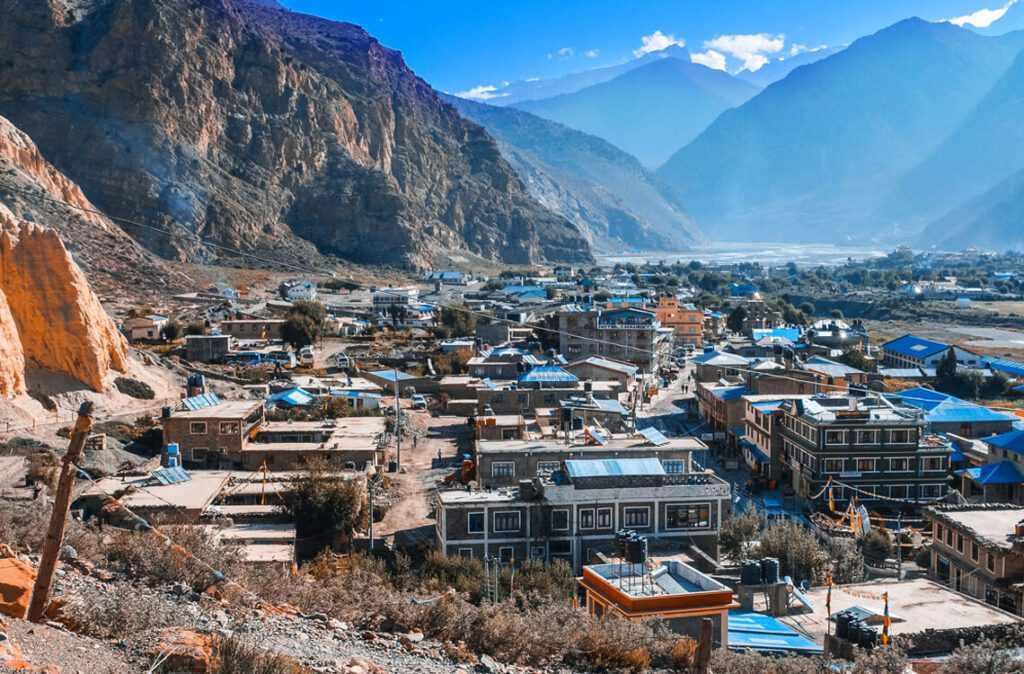
There are several airlines that operate flights between Kathmandu and Jomsom, including Yeti Airlines, Tara Air, and Simrik Airlines. The flight time is approximately 20-25 minutes, but it is important to allow for extra time as flights can sometimes be delayed due to weather conditions.
Take a Jeep:
Taking a Jeep is a popular option for getting to Upper Mustang from Kathmandu. The journey involves taking a jeep from Kathmandu to Pokhara, which takes around 6-8 hours, and then another jeep from Pokhara to Jomsom, which takes around 7-8 hours. The journey can be quite bumpy, but it’s a great way to experience the local way of life and see the countryside.
Trek from Pokhara:
Trekking from Pokhara to Upper Mustang is an option for those who are up for a challenge. The trek takes around 15-20 days and requires a high level of fitness and endurance. The trek involves crossing high mountain passes, walking through rugged terrain, and camping in remote areas. But it’s a great way to immerse yourself in the beauty of the region and experience the local culture up close.

Take a helicopter:
Taking a helicopter is a luxurious option for getting to Upper Mustang from Kathmandu. The journey takes around 2-3 hours and offers stunning aerial views of the Himalayas. The helicopter lands in Jomsom, from where you can begin your trek to Upper Mustang.
Weather Conditions of the Upper Mustang in March
Upper Mustang is located in the rain shadow area of the Himalayas, which means it receives very little rainfall throughout the year. March is considered the start of the spring season in Upper Mustang, and the weather conditions are generally dry and mild. However, it is important to note that Upper Mustang is situated at a high altitude, and the weather can be unpredictable, so it is always a good idea to be prepared for sudden changes in weather.
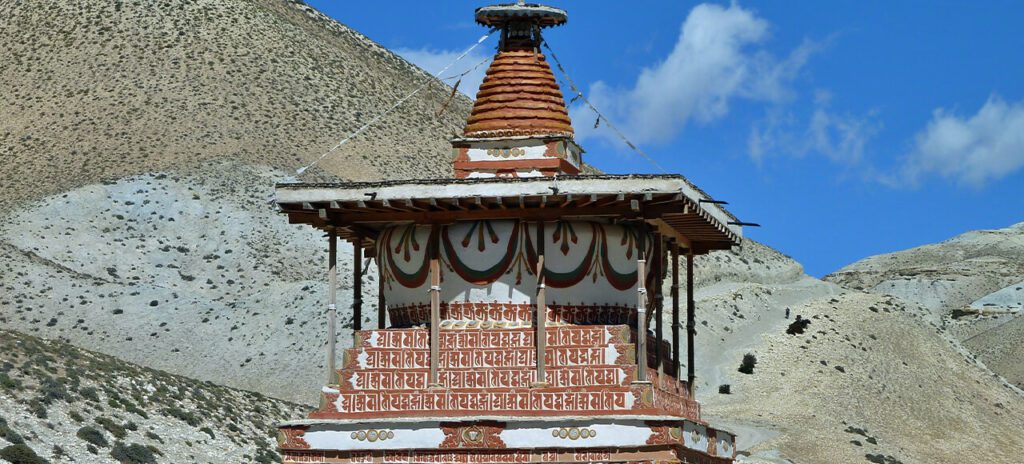
In March, the average daytime temperature in Upper Mustang is around 13-14°C (55-57°F) with nighttime temperatures dropping to around -2°C (28°F). The weather is generally sunny and clear, making it a great time for trekking in the region. However, there may still be occasional snowfall or light rain in some areas, particularly at higher elevations.
Highlights of the Upper Mustang Trek in March
Trekking in March in this region offers some of the most spectacular views of the snow-capped peaks, blooming rhododendron forests, and charming local culture. Here are some of the fun-filled highlights of the Upper Mustang Trek in March:
Mesmerizing Landscapes:
Upper Mustang Trek is renowned for its spectacular landscape. The trekking route takes you through the arid landscape, rolling hills, deep canyons, and massive cliffs. In March, the weather is warm and sunny, with clear blue skies that make the scenery even more breathtaking.
Also Read: Upper Mustang Trek in January: Travel Tips, Weather, and More
Trekking through local villages:
The trek also takes you through the ancient villages of the Upper Mustang. You can experience the unique culture and lifestyle of the local people, who have been living in this region for centuries. The people of Mustang are warm and welcoming, and you can interact with them to learn more about their traditions and way of life.
Crossing High Mountains:
The trek also takes you across some of the highest mountain passes in the world, including the Thorong La Pass, which is at an altitude of 5,416m. Crossing these passes is a challenging but exhilarating experience, and the views from the top are simply breathtaking.
Blooming Rhododendrons:
March is the time when the rhododendron forests of the Upper Mustang come alive with vibrant colors. The hillsides are covered with beautiful pink, red, and white rhododendron blooms, making for a stunning visual experience.

Unique rock formation:
The Upper Mustang region is also known for its unique rock formations. The landscape is dotted with strange and intriguing formations, such as towering cliffs, deep canyons, and strange rock spires. These formations make for great photo opportunities and add to the overall sense of adventure.
Exploring Buddhist monasteries:
The Upper Mustang region is home to some of the most ancient and revered Buddhist monasteries in the world. These monasteries are rich in history and culture and offer a glimpse into the spiritual practices of the local people. In March, the monasteries are often decorated with colorful prayer flags, adding to the overall ambiance of the region.
Trekking at a comfortable pace:
March is a great time to trek in Upper Mustang because the weather is mild and comfortable. You can take your time and enjoy the trek at a relaxed pace, without worrying about extreme temperatures or heavy snowfall. This allows you to fully immerse yourself in the stunning landscape and local culture of the region.
Required Permits for the Upper Mustang Trek
If you are planning to trek to Upper Mustang, you will need to obtain several permits.
The permits required for the Upper Mustang trek are:
- Restricted Area Permit (RAP): A Restricted Area Permit (RAP) is a special permit that is required to enter Upper Mustang. This permit is issued by the Nepal Department of Immigration in Kathmandu, and you must have a licensed trekking agency organize the paperwork on your behalf. The permit fee is USD 500 for the first ten days and USD 50 per day thereafter.
- Annapurna Conservation Area Permit (ACAP): The Annapurna Conservation Area Permit (ACAP) is mandatory for all trekkers in the Annapurna region, including Upper Mustang. The permit fee is USD 25 per person and can be obtained at the Tourist Service Centre in Kathmandu.
- Trekkers’ Information Management System (TIMS) card: The Trekker’s Information Management System (TIMS) card is a registration card that contains information about the trekker, the route, and the duration of the trek. It is mandatory for all trekkers in Nepal including Upper Mustang. The TIMS card can be obtained at the Nepal Tourism Board office in Kathmandu or Pokhara, or from your trekking agency.
Flora that can be spotted during the Upper Mustang Trek
During the Upper Mustang trek in March, you can expect to see a variety of flora. The Upper Mustang region is located in the rain-shadow area of the Himalayas, which means it’s a dry area with very little rainfall. Despite the dry climate, the region supports a variety of plant species that have adapted to the harsh conditions. Here are some of the flora that you may spot during the trek:
- Rhododendrons: Rhododendrons are the national flower of Nepal, and they bloom in March. You’ll find them along the trails in vibrant shades of pink, red, and white. These beautiful flowers are a common sight during the trek and add color to the otherwise dry landscape.
- Juniper trees: Juniper trees are common in the Upper Mustang region and are used to make incense. They can survive in dry and arid climates and can grow up to 30 feet tall. The wood of the juniper tree is known for its fragrance and is used for various purposes, including building houses and furniture.
- Edelweiss: Edelweiss is a small, white flower that grows in rocky areas. It’s a symbol of the Alps and is often associated with mountaineering. You may spot edelweiss during the trek, especially at higher altitudes.
- Berberis: Berberis is a shrub that grows in rocky areas. It has yellow flowers and red berries that are often used in traditional medicine. The berries have a tart flavor and can be used to make jam and juice.
Animals that can be spotted during the Upper Mustang Trek in March
March is the beginning of the spring season in Nepal, and it is a good time to spot various species of animals during the Upper Mustang trek. Here are some of the animals that you may spot during the trek:
Blue Sheep
Blue sheep, also known as bharal, is a wild sheep that lives in the Himalayan region of Nepal. They can be spotted in Upper Mustang grazing on the hillsides and cliffs.
Snow Leopard
Snow leopards are one of the most elusive animals in the world, but if you’re lucky, you may spot one during your trek in Upper Mustang. They live in high-altitude areas and are known for their beautiful thick fur and distinctive markings.

Tibetan Wolf
The Tibetan wolf is another animal that you may spot during the Upper Mustang trek. They live in packs and are known for their impressive hunting skills.
Himalayan Marmot
Himalayan marmots are cute, furry animals that live in burrows and can be spotted in the hillsides of Upper Mustang. They are social animals and live in large colonies.
Difficulty Level of the Upper Mustang Trek in March
March is generally considered to be a good time to undertake this trek, as the weather is usually dry and clear, with mild temperatures during the day and cooler temperatures at night. However, the difficulty level of the Upper Mustang trek in March can vary depending on a few factors.
Firstly, the altitude of the trek is a significant factor in its difficulty level. The Upper Mustang trek takes you to a maximum altitude of 3,840 meters (12,598 feet) at Lo Manthang, which can cause altitude sickness in some trekkers. If you are not used to hiking at high altitudes, you may find the trek challenging.
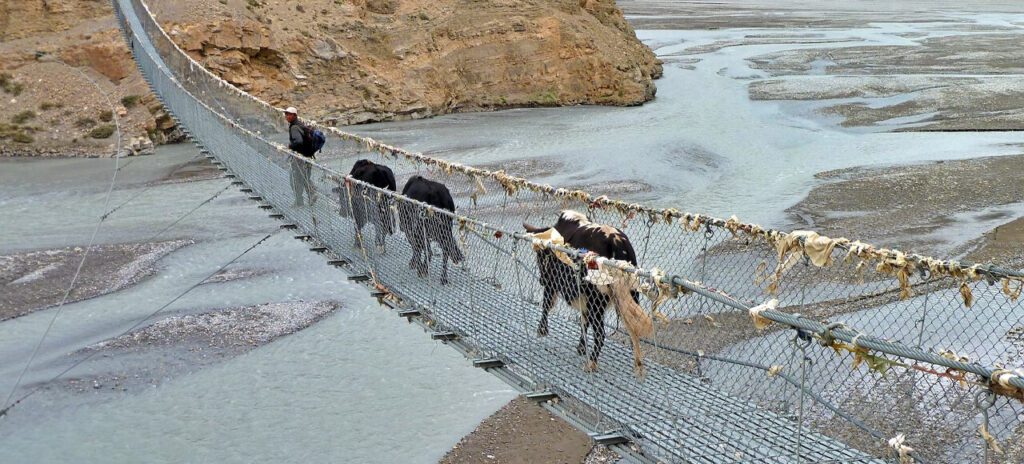
Secondly, the terrain of the Upper Mustang trek can be quite challenging, especially for inexperienced trekkers. The trail is steep and rocky in some places, and there are several river crossings to navigate. In March, there may be snow and ice on the higher sections of the trail, which can make the trek even more challenging. You will need to be physically fit and mentally prepared to tackle the terrain on this trek.
Tips for the Upper Mustang Trek in March
The Upper Mustang Trek is a stunning journey through the high Himalayas of Nepal, which offers a unique opportunity to explore the ancient Tibetan culture, religion, and art. Trekking in March can be a bit challenging due to the cold weather and the possibility of snowfall, but with proper preparation and equipment, it can still be a rewarding experience. Here are some tips for the Upper Mustang Trek in March:
Bring warm clothing:
March is still winter in the Upper Mustang region, so it can be very cold, especially at night. It’s crucial to pack warm clothing like a down jacket, thermal layers, hats, gloves, and thick socks to keep yourself warm.
Check the Weather Forecast:
Before heading out on the trek, make sure to check the weather forecast for the next few days to ensure that you’re prepared for any changes in weather conditions. March can be a bit unpredictable, with occasional snowfall, so it’s essential to be prepared.
Hire a guide or porter:
Hiring a guide and porter can be very helpful as they can assist you in navigating the trails, carrying your gear, and ensuring your safety during the trek. They can also provide you with valuable insights into the local culture and history of the region.
Related: Upper Mustang Trek Cost: Permits, Expenses, and More
Acclimatize properly:
The Upper Mustang Trek involves hiking to high altitudes, which can be physically demanding. It’s essential to acclimatize properly by taking frequent rest breaks, staying hydrated, and eating a healthy diet. Proper acclimatization can prevent altitude sickness, which can be dangerous.
Pack a first aid kit:
It’s essential to bring a basic first aid kit with essential items like band-aids, antiseptic, painkillers, and any medications you may need. You should also carry any prescription medication with you.
Carry enough cash:
There are limited ATMs and money exchange facilities in the Upper Mustang region, so it’s essential to carry enough cash to cover your expenses during the trek. You should also carry small denominations as larger notes may be difficult to change.
Let our expert team at Asian Heritage Treks and Travel take care of everything — from guided tours to personalized packing tips and travel arrangements.
Plan My Mustang Trip




